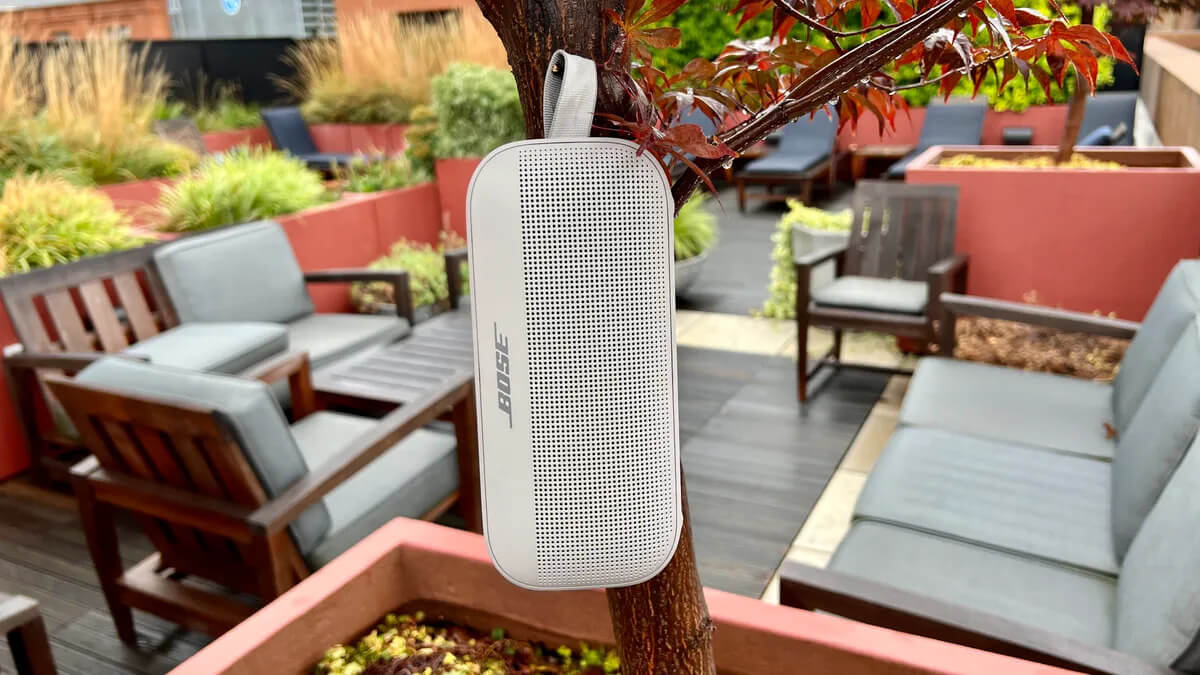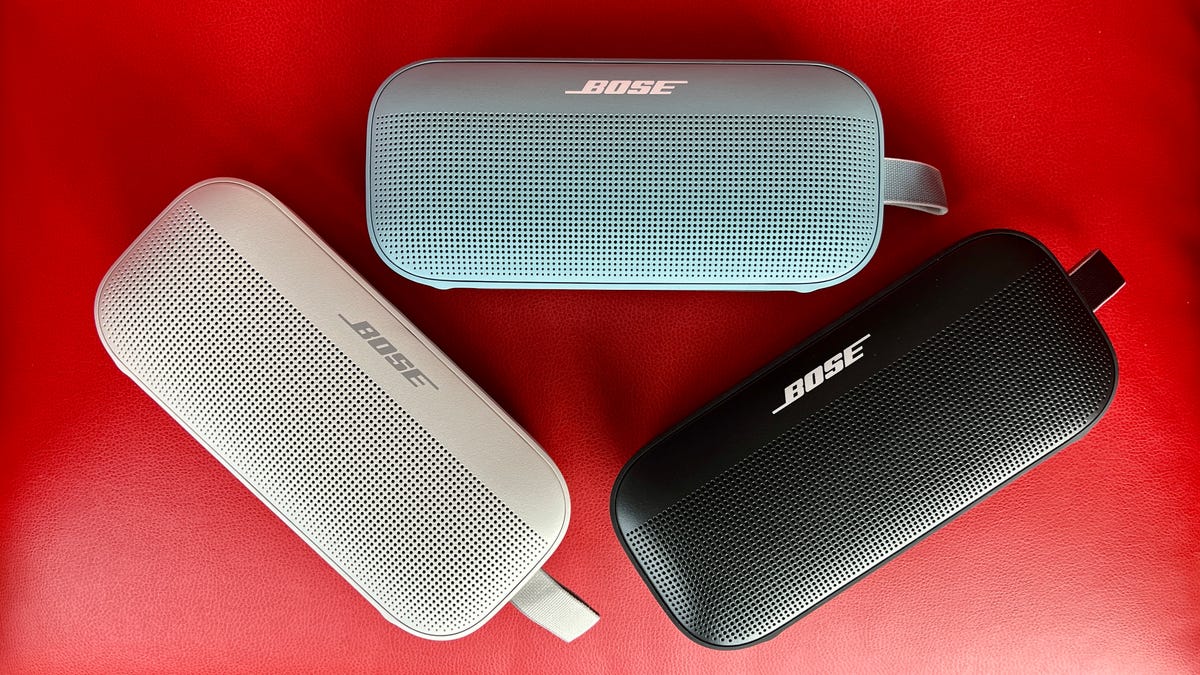PROS:
- Delivers amazing sound for its compact size
- Can be propped up horizontally, laid down flat or hung vertically by its integrated loop
- Fully waterproof and dust-proof (also floats).
- A maximum of 12 hours of battery life.
CONS:
- It has no audio input
- The Silicone finish on back attracts some dust
- It Uses Bluetooth 4.2 instead of 5.1
On it’s launch, Bose made some bold claims about the SoundLink Flex’s sound quality, especially its bass performance. The exact quote was, “astonishing bass… that you can feel in your chest.” I have to say that this speaker delivers on the hype. For its size, the Flex produces amazingly loud sound, is fully waterproof, and should be near the top of your list when looking for a portable Bluetooth speaker.
This mini speaker is available in three color options including black, white smoke and stone blue. This speaker floats, which is useful if you frequently drop your Bluetooth speakers in the pool. I wouldn’t want to drop it anywhere, but Bose claims that its soft silicone back and powder-coated steel grille “won’t peel or flake, and is resistant to corrosion and UV light.” As a result, it’s built to last and can withstand minor drops.
The silicone finish is good, but it attracts dust, which is more noticeable on the black. I prefer the blue and white smoke color. There are buttons on top for controlling playback, which is very useful, but most people will simply use their phone as a remote to play music. One major thing that is missing is an audio input, so you cannot connect an audio device with an auxiliary cable. Bose Soundflex is only a Bluetooth speaker.
The Bose SoundFlex uses the older Bluetooth 4.2 rather than 5.1, which appears unusual as most new Bluetooth speakers use Bluetooth 5.1. Bose said that upgrading from Bluetooth 4.2 to Bluetooth 5.1 did not provide a significant benefit to its customers because the enhancements had “no bearing on the A2DP performance of the Flex”. Given the limited benefits of upgrading to 5.1, Bose chose to use a chip previously used in the SoundLink Micro, which had been “thoroughly field-tested and updated over time for interoperability and reliability.”
Multipositional
The speaker is designed to be held up horizontally, laid flat, or hung vertically using its integrated loop. Bose shows it in pictures with a carabiner attached to the loop, but no carabiner is included; you must provide your own. However, having a loop is helpful, and it appears to be fairly durable.
The speaker’s sound is automatically optimized based on its position. It has a built-in microphone, so if you’re using it as a speakerphone with a group of people, you may want to lay it flat. It does a good job of picking up your voice and produces far more sound than your phone’s small speakers.

You’ll be blown away by how much sound this speaker produces, and it’s good sound. But it can’t completely avoid being a small speaker. The soundstage is limited in size and can sound constrained when playing more complex music tracks with multiple instruments playing at the same time. To avoid distortion, certain frequencies are reduced, especially at higher volumes.
Sound comparisons
I compared the SoundLink Flex to several other compact portable speakers. The most common comparison is to the JBL Charge 5, which costs $180 and is fully waterproof with an IP67 rating. The Charge 5 is slightly larger and produces more sound. Its bass is larger, but undoubtedly boomier and more forward, so the mids, where vocals reside, can sound slightly recessed. The Bose has better overall tonal balance, and the bass is more defined. I preferred the overall sound. Both speakers’ apps lack EQ settings, so you have to stick with their signature sound. That’s fine with me, but a lot of people enjoy having some sort of EQ.
The Bose sound has more body and depth than that of the UE Wonderboom 2, an older model that costs $100 and delivers good sound despite its small size. I also like Bang & Olufsen’s Beosound A1 second generation. The Bose outperforms the more expensive model as well, providing a more full-bodied sound. However, the A1 supports multipoint Bluetooth pairing, allowing you to pair it with both your phone and a computer. The Flex does not appear to have this feature, but you can pair it with multiple devices and manually switch between them.
Final thoughts on Bose SoundLink Flex
In summary, with all of the supply chain issues and chip shortages, pricing for Bluetooth speakers has been a little strange lately. And by strange, I mean that prices only seem to be rising and not much is on sale. So, while $150 may seem like a lot to some people, it’s a reasonable price for a top Bluetooth speaker these days, particularly for Bose. As I mentioned earlier, if you’re looking for a portable Bluetooth speaker, the Bose SoundLink Flex should be on your radar, if not at the top of your list.

